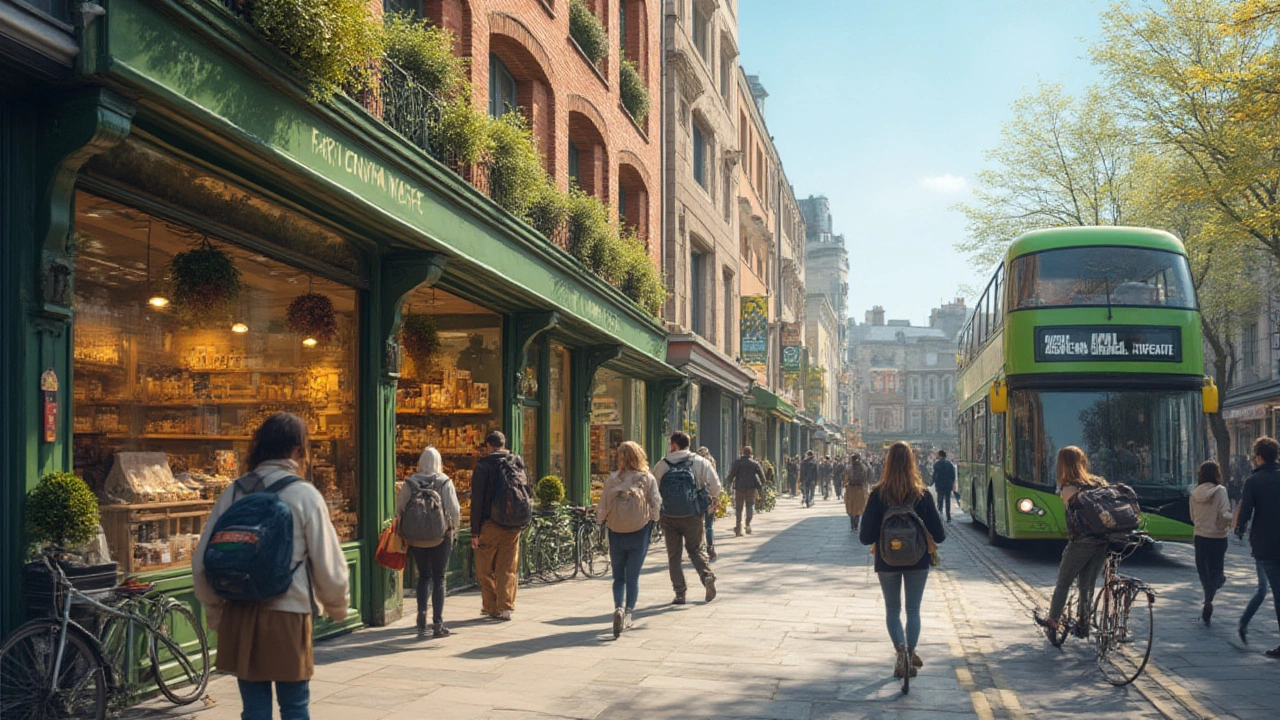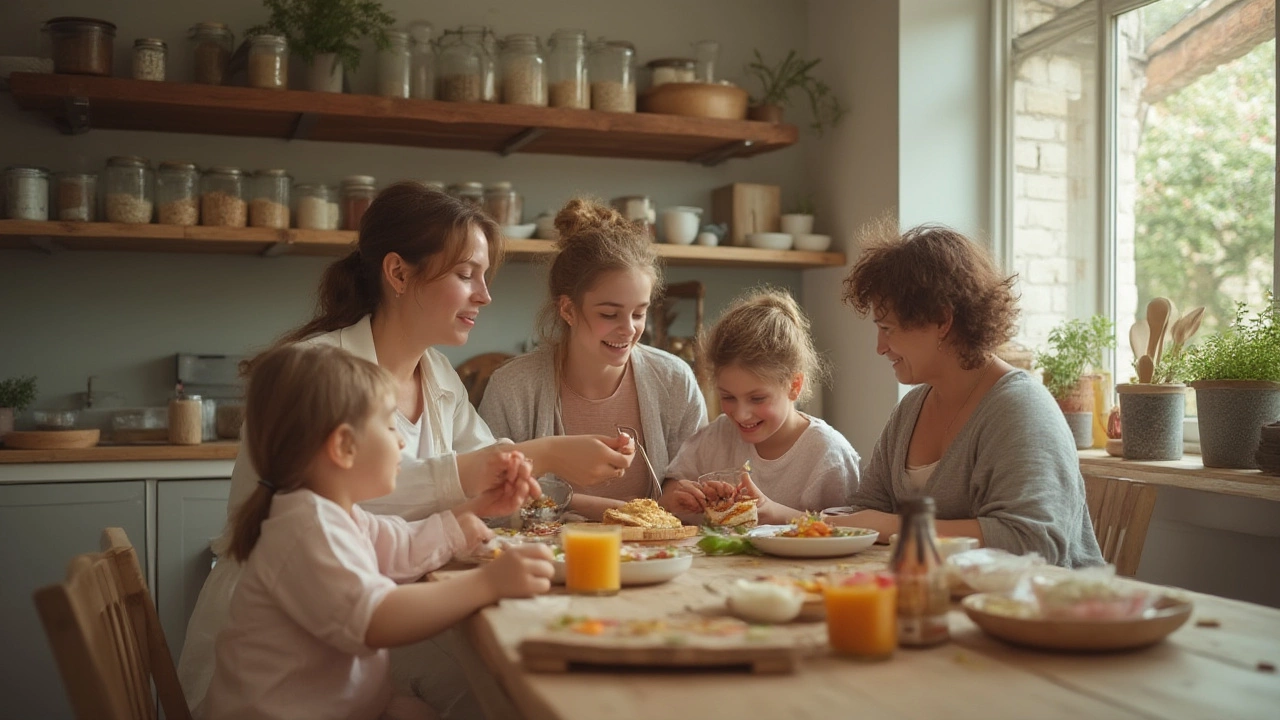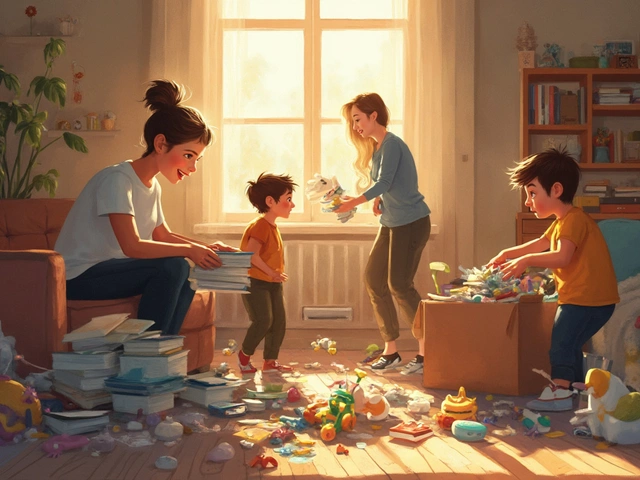Walk down the cleaning aisle or browse a beauty store, and eco-friendly products pop up everywhere—laundry detergents in minimalist packaging, shampoo bars wrapped in paper, reusable water bottles in every shade. But what’s the actual fallout when someone makes the switch? Forget the marketing buzz for a minute. If half the country started buying sustainably sourced, plastic-free, biodegradable stuff tomorrow, what would honestly happen to our health, homes, and the larger world?
The Ripple Effect on the Environment
Most conversations about eco-friendly products start (and sometimes end) with the planet. So, what kind of dent does it make? Swapping everyday basics for their greener versions reduces a ton of waste—the average Brit bins about 178 kg of packaging each year. That’s the weight of two grown Saint Bernards or three quarters of a grand piano, just in wrappers and bottles. By replacing single-use plastics with bamboo, glass, or stainless steel, households chip away at landfills. And since plastic takes over 400 years to degrade, every reusable bag or beeswax wrap counts much more than it seems.
But here’s where things get more interesting. Eco-friendly doesn’t just mean less rubbish. Many products are crafted to limit harmful chemicals leaching into waterways and soil. Let’s take bamboo toothbrushes—they’re compostable, sure, but manufacturers also avoid synthetic dyes and preservatives that mess with aquatic life. Recent research from the University of Leeds found that switching conventional cleaning sprays for eco alternatives can cut indoor air pollution by 35%. It isn’t just about what leaves the house, but also what lingers inside it.
On a bigger scale, the push for green products changes what factories do. If my house and a million others start skipping plastic microbeads, it forces personal care brands to rethink formulas. Sometimes, major companies even invest in cleaner manufacturing processes or certify entire supply chains as cruelty-free or fair trade. These new norms don’t just trickle down—they make a splash globally.
Want a quick glance at typical annual waste stats for a UK household?
| Type of Waste | Average Per Year |
|---|---|
| Plastic Packaging | 40 kg |
| Food Waste | 70 kg |
| Chemical Cleaners | 12 litres |
| Paper | 56 kg |
So, tossing fewer bottles in the bin does more than clear out cabinets. If thousands act together, manufacturers notice—some even switch from fossil fuel-based packaging to compostable or refillable options out of sheer market pressure. Suddenly, you’re not just a customer; you’re part of a demand wave pushing whole companies into greener habits.
That’s not all, though. Inviting eco-friendly habits often means learning new ways to live. My mate Sarah taught her kids to pack sandwiches in cloth wrappers and carry reusable water bottles. The result? Their school saw way less lunchtime trash and started a recycling drive. Small changes can snowball fast, especially when schools, offices, and local shops join in—and sometimes whole towns follow suit. There’s something contagious about visible, hands-on action.
Health and Home: What Changes?
People rarely talk about how switching up cleaning basics affects your body and space. I started with laundry powder (the type that smells like lavender fields, not heavy musk), and within two weeks, Derek actually stopped sneezing every time I changed the bedsheets. Turns out, loads of standard products have what scientists call VOCs—volatile organic compounds—which hang in the air, irritate skin, and even hurt our lungs long term. Swapping these for plant-based, unscented, or mineral alternatives makes a real difference, especially if you have allergies or little ones running about.
Here’s the kicker—eco-friendly doesn’t always mean fussier or less effective. A classic myth. You can buy washing-up liquid with only a handful of recognizable ingredients (think lemon oil and sodium carbonate) and still get sparkling dishes. The trick? Looking for straightforward ingredient lists and avoiding “greenwashing”—that sneaky branding where things look pure and green on the outside, but hide questionable stuff in small print.
Your indoor air quality improves too. Remember the Leeds study? It showed people who switched to non-toxic home cleaners noticed fewer headaches and better sleep. If your current air freshener gives you migraines or makes the cat act odd, try a soy candle or just open the windows wide. My friend Liz, who works from home, ditched chemical sprays and noticed her houseplants stopped drooping. That’s a win for both her lungs and her fern.
It’s not just about nasty chemicals, either. Eco-friendly products often focus on less wasteful packaging, which means smaller, simpler bottles or bars—way easier to stack under the sink. The classic shampoo bottle mountain has shrunk to one little bar for me, my husband, and our teenage daughter. Saves money, too, because bars last forever, and you’re not rebuying a pump bottle every month.
There's a psychological impact to all this, too. Marie Kondo wasn’t wrong; a tidy, purposeful home actually does lift your mood. Swapping cluttered cleaning cupboards for a handful of glass spray bottles and cloths feels good. People say they’re more motivated to keep going—ditch the cling film, swap out mesh produce bags, refill spices at the local shop. These small steps can turn into a real lifestyle shift, and guests tend to notice (in a good way).

The Money Question: Savings and Pitfalls
Let’s get practical: is all this good for our wallets? That depends where you shop and what you buy. Some eco-friendly products do cost more upfront. A basic bamboo toothbrush might run twice the price of plastic. A bottle of eco cleaning spray could set you back £3 instead of £1.50. But here’s the thing—do the maths over time, and it often works out cheaper. A single reusable coffee cup (£8) pays for itself in about ten shop visits (since you dodge the 25p “latte levy” every time).
Reusable period products, such as cups or pads, look expensive until you compare the cost of buying monthly disposables for years. The same goes for beeswax wraps or stainless steel food containers. Big upfront, small bills later. My friend Jess swears by her set of silicone food covers—bought once, used dozens of times a week, and she hasn’t bought cling film in a year and a half.
There's also the fact that buying less is usually a byproduct of sustainable living. If you’re refilling cleaning bottles or bulk-buying soap, you stop impulse-buying packs of wipes or a new handwash every other week. This simplicity helps most people spend less at the supermarket—not more.
But honestly, you need to watch for greenwashing and overpriced “designer” eco goods. Some brands slap a leaf logo on a product and hike up the price without improving ingredients or ethics—it's all in the marketing. Look for specific claims: certified B Corp, Soil Association Organic, Fairtrade symbols. Shop at refill shops—even corner shops are trying out eco aisles these days. Don’t be afraid to make your own basics at home, either. White vinegar, lemon juice, and bicarb can tackle most cleaning jobs for pennies.
Surprised by how much you can save per year? Here’s a quick look:
| Category | Eco-Friendly Alternative | Yearly Savings (Approx.) |
|---|---|---|
| Cleaning Products | DIY/Home-refill | £50 |
| Single-use Bottles | Reusable bottle | £35 |
| Period Products | Reusable cups/pads | £60 |
| Food Wrap | Beeswax/cloth | £25 |
One thing people don’t always expect—eco habits encourage mindful spending. You aren’t just replacing products but rethinking what you actually need. You’ll try bulk-buying, repurposing containers, or even swapping items with friends or neighbours. And if you’ve got kids, introducing a “fix it before you buy it” rule can save a fortune on toys and gadgets. It all snowballs into less waste, less stress, and a little more money left over at the end of the month.
How Society Shifts: From Markets to Mindsets
The wildest change happens outside the house. People who switch to eco-friendly products often end up in a totally new crowd—they join social media groups about plastic-free living, find refill shops in hidden corners of the city, or start swapping zero-waste recipes and thrift shop finds online. It’s not just about buying differently, but seeing the world differently.
This collective action tips the scales fast. When a big chunk of people prioritise eco goods, supermarkets chase those trends. In 2024, Waitrose announced a whopping 27% jump in demand for refillable cleaning products—so they installed refill stations in 100 locations. Small shops and markets do the same, so you get more choice and lower prices. As options appear everywhere, it becomes less “niche” to buy green, and far more normal.
It also changes how companies do business. In a study from the London School of Economics, brands that switched to sustainable packaging saw a meaningful bump in customer loyalty—people stuck with them simply because their ethics aligned. Peer pressure kicks in. When a few neighbours or parent groups start, the whole street can follow. On my block, curbside bins shrank as everyone caught the composting bug. The bin men even started joking about how light their load had become on collection day.
This movement isn’t just local. Every eco switch pushes new policies. Big governments start noticing if enough voters ask for stricter plastic bans or cleaner air laws. France banned single-use plastic plates and cutlery in 2021 because regional towns showed it could work. And when big businesses go green, smaller suppliers follow along, making eco options the cheapest and easiest alternative in the long run. As Tim Lang, professor of food policy, put it:
“Every shift in daily routine—every swap or refill—ripples outwards, shaping the choices that markets and politicians make.”
If you’re still on the fence, start small. You don’t have to quit everything overnight. Begin by switching your washing-up liquid, or bring a fabric bag to the supermarket. Track what you save and note what changes at home. Chances are, you’ll inspire someone else (even if it’s just your partner or your kids). I never thought Derek would buy into soap bars, but now he hands them out at his office like sweets. Sometimes, little swaps spark bigger change than you’d ever expect.





